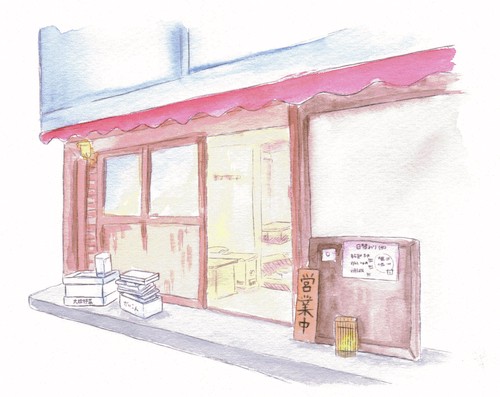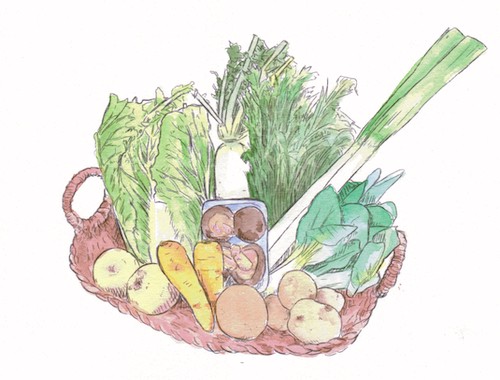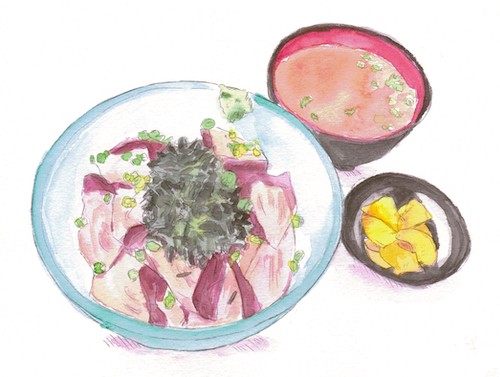
Illustrations by Kaki Okumura
Keep it simple and focus on quality
The menu is a wooden board hanging out in front of the restaurant, with just three options scrawled in black marker:
a) Seared tuna donburi
b) Minced toro with grated yam donburi
c) Grilled salmon teishoku
As I stood there thinking about what I wanted to order, I noticed there were crates and boxes still stacked in front. I peered inside to find a load of daikon, yams, and empty styrofoam boxes that still smelled slightly of seafood.
“Did you go to the Toyosu fish market for these?”
“Yes ma’am! Just this morning!” the owner replied from inside.
For less than ¥1000, or about $10, there is not a better deal on the planet. The restaurants in Japan never cease to amaze me with their quality of food.
It’s quite common for restaurants in Japan to operate on this business model. Rather than several pages of options, the menu is dependent on whatever is sold at market that day and consists of only a few daily specials.
A fresh shipping of tomatoes and cucumbers? That’s the side dish of the day.
A load of yellowtail came in this morning? Let’s make a donburi teishoku out of it.
The ingredients available lead the menu of the day, rather than the menu items dictating what needs to be bought at market. To be seasonally based is not a trend: It’s the foundation.

The Japanese restaurant philosophy
Many restaurants today, especially large chains and big restaurant groups, focus on developing a long and multifarious menu first. Just look at the menu for places like the Cheesecake Factory, P.F. Chang’s, or Olive Garden, and it’s clear to see that they are oversaturated with options that are available year-round with little consideration of the seasonality of the ingredients. A long list of 10 different kinds of pasta and pizza, or a menu serving both dim sum, sushi, ramen, and rice bowls.
Looking at the business model of a Japanese restaurant chain called Shinkichi, they reverse their focus: ingredients first, menu second. While they have several different locations, each location constructs its own menu, with the staff trained to go out to market every morning to select the best ingredients. What is a salmon teriyaki menu item one day might use yellowtail the next, and what is a side dish of spinach ohitashi one day might be restyled to use mizuna leaves instead. Following general guidelines on the restaurant’s branding and seasoning style, they first refer to their ingredients and then decide on a few things to cook that day.
Looking at the business model of a Japanese restaurant chain called Shinkichi … each location constructs its own menu, with the staff trained to go out to market every morning to select the best ingredients.
The dining landscape in Japan is changing, but what many restaurants still continue to do right is focusing on just a few things to cook every day, and making the best use of what’s at market that morning. By using what’s local and in season, the natural sweet or savory flavor of the produce and ingredients can come forward without having to be covered up in tons of oil, sugar, or salt. People can eat better, consume sustainably, and enjoy the freshest ingredients available to them.
Anyways, I think I’ll have the seared tuna donburi.


If you enjoyed this piece, please reach out at my email kokumura@kakikata.space! I would be happy to answer any questions pertaining to Japanese lifestyle philosophy, healthy eating, recipes, or general comments 😊
Warm regards,
Kaki